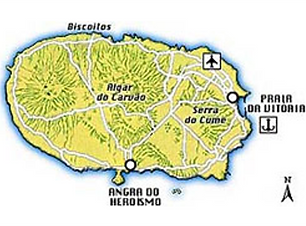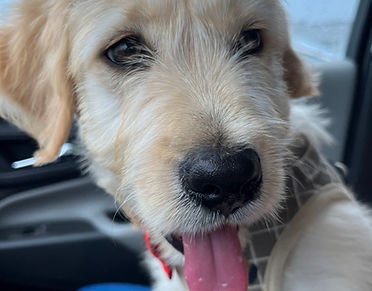The Breed
Azorean Heritage Barbados
Barbado da Terceira Dog Breeder

The Azores, Portugal

Location
The archipelago is located in the Macaronesia region of the North Atlantic Ocean, off the coasts of Africa and Europe. It is about 870 miles west of Lisbon.

The Azores
The Azores, officially the Autonomous Region of the Azores, is one of the two autonomous regions of Portugal. It is an archipelago composed of nine volcanic islands.

Terceira Isla
It is one of the larger islands of the archipelago. It is the location of the Azores' oldest city, Angra do Heroísmo, the historical capital of the archipelago and UNESCO World Heritage Site.

Breed History
The Portuguese Barbado da Terceira, also known as the “Terceira Cattle Dog,” is a breed of herding and guard dog that originated in the volcanic archipelago of the Azores. The breed derives from the various dogs brought to the Azores by colonists and visitors since the settlement of the islands that began in the 15th century.
The origins of the Barbado certainly come from a mixture of sheepdogs, many of which were cattle dogs. These dogs, adapting perfectly to the climate of Terceira Island and living in a particularly isolated place, developed a set of grazing skills that the locals much appreciated. Dogs that bit low (in the pastern area) were selected to work with dairy cows, and those that bit high (in the hock area or above) were selected to work with wild cattle.
It is also interesting to note that the Portuguese Water Dog, which so often accompanied Portuguese sailors on their incursions into the Atlantic, may have possibly participated in the development of Barbado da Terceira.
People from Terceira started to give greater importance to the Barbado breed in the '70s.
The breed was recognized by the Clube Português de Canicultura (CPC) in 2004, having been the tenth Portuguese breed to deserve this distinction.
In January 2021, the AKC accepted the Barbado da Terceira into its Foundation Stock Service.
Despite being essentially a cattle dog, it has also been used to work with sheep and goats. BDT also makes a great companion dog.
Barbados
da Terceira
"in Action"
Edit: Matilha Sinergica
From: Terra dos Bravos
Music: Os Bravos
Breed Standards
The Barbado da Terceira is a medium-sized dog. Their height and weight range from 18-21 inches and 46-57 pounds for females and 20-23 inches and 55-66 pounds for males. The length of the body is slightly longer than the height at the withers.
The BDT appearance is rustic, with a strong, well-muscled body covered with long abundant wavy hair. They are loyal companions to their owners, intelligent, easy to teach, joyful, docile, and willful.
Barbado da Terceira should have a strong head that is quite large and proportionate to their body. The length of the skull is slightly longer than the length of the muzzle. The neck is medium-sized, strong, well-muscled, and well-set into the shoulders, carrying the head with dignity.
BDT facial region should have a larger, cubical, and well-pigmented nose. The lips are firm, thick, and well-pigmented. The eyes are medium-sized, semi-frontal, horizontal, oval-shaped, expressive, intelligent, and honey to dark brown with well-pigmented lids.
_edited.jpg)

BDT coat is long, dense, slightly wavy, neither straight nor curled, with abundant undercoat all over the body. The working clip, consisting of shortening the coat evenly, must be used in conformation dog shows.
The hair is strong, slightly thick, but not harsh. It is dense over the whole head, muzzle, and over the eyes, covering them. The hair is abundant in the jaws, forming the beard that gives the breed its name. On the limbs, the hair is abundant, including between the toes. It is also abundant on the tail down to the tip.
BDT coat colors are ash, yellow, black, and wolf grey. The wolf grey can come in light, medium, or dark shades. White markings are acceptable on the collar, chest, belly, and tip of the tail. The markings can also be on the forefeet, hind feet, or both. A blaze of white may be on the head.
For more detailed information about the breed standard, please visit the Clube Portugues de Canicultura. (link below)
https://www.cpc.pt/en/breeds/portuguese-breeds/terceira-cattle-dog/





